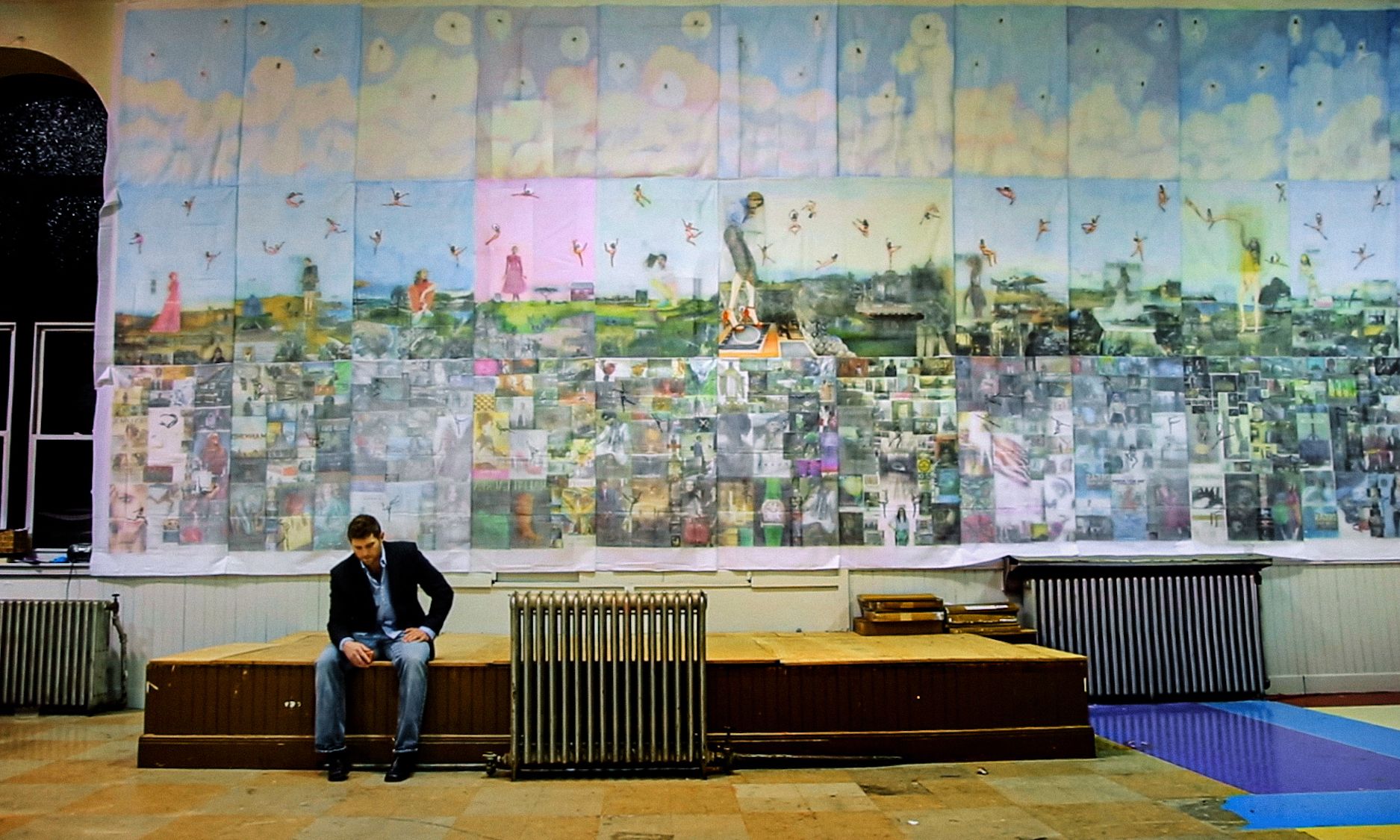Still from Krimes. Courtesy DOC NYC.
The annual documentary film festival DOC NYC has long been a reliable source of new documentaries on art, and this year is no different. Films screen in-person through 18 November and online through 28 November.
The aptly-named Krimes, directed by Alysa Nahmias, focuses on the painter and sculptor Jesse Krimes, who honed his skills in federal prison after a conviction for selling cocaine. He had a long time to develop. With a title suggesting a 19th-century melodrama, Krimes has familiar elements—a rough childhood, absent father, stepfather’s suicide, drug use, drug dealing, prison, release, slow but resolute redemption, apotheosis in a gallery show. And tall, bearded Krimes is camera-ready. So is another true-crime story in the doc.
Krimes applied hard labor to making art while confined. A secret: hair gel became a crucial material. Art gave Krimes and other men special status inside. Making likenesses of other prisoners, they had a valuable product that earned them protection. Krimes and the other prison artists still aspired to making more than portraits.
“Doing portraits was like a card trick—we were looking for something deeper,” one of them says.
Once out, Krimes is saved by his work ethic, creating murals piece by piece and odd sculptures with improbable materials. An incarcerated man whose time inside became an asset, he used art as a shield, alongside peers who did the same. One wonders how much more talent remains locked up today. (Just before its debut at DOC NYC, Krimes was acquired for wide release distribution by Viacom/MTV Documentary Films.)
A still from White Cube. Courtesy DOC NYC
White Cube, from the Netherlands, follows the artist Renzo Martens, who uses art to kickstart development on a remote plantation in the Congo. The gambit, a well-intentioned mixed bag, reminds us how hard a task that is.
Martens, the film’s director and on-screen narrator, brings us into a project that he has initiated. Workers near the town of Lusanga are barely paid for harvesting nuts for palm oil, and the company skims off much of that. His plan is to employ the palm workers to make sculptures, which he helps them sell, hoping to buy back the land which the operating firm originally stole from them. In the process, Martens is fired and expelled from the plantation, but his team makes the transition to sculpture. The work travels to the SculptureCenter in Queens. In the meantime, a cultural center is built in Lusanga, a white modernist cube that gives the film its name.
White Cube, in its Congolese scenes, has a jolting tactility that shows the grueling toil of tropical agriculture, plus the comedy of Martens navigating plantation mud in city shoes. Workers know that they’re being exploited; they’re still nonplussed by the alternative of making art and being paid for it.
Showing their art in New York magnifies the differences between the artists from the Congo and those trying to help them, and casts doubt on the enormous mission ahead. The white building itself, stark and radiant, looks as if it might outlive their enthusiasm. Martens has made a grim parable.
A still from The Art of Making It. Courtesy DOC NYC
The Art of Making It, by Kelcey Edwards, eyes the often-Sisyphean prospect of living as an artist. The polished film expands case studies into a soup-to-nuts dissection of the art world, most of it unremittingly negative, but still sounding like conventional wisdom to those who follow the business of art. Yet the artists who tell us why they haven’t made it, at least not yet, are worth watching.
The talking heads in this doc are right. The odds are against you if you don’t have an MFA, or if that MFA is not from Yale, we’re told. The average student debt from art school is more than $100,000, a lot to pay back with low-wage jobs if you’re making art at night.
This art world primer stresses the power of mega-galleries and mega-institutions. The dealer and collector Stefan Simchowitz and the critic Jerry Saltz trash the feeding frenzy of high-priced collecting like veteran comedians. Yet it’s perplexing that laments of injustice come from people like Pace Gallery president and chief executive Marc Glimcher and Michael Govan, the director of the Los Angeles County Museum of Art (Lacma), who benefit from the way things are, and still complain (albeit gently) all the way to the bank. If they don’t approve of how the art world operates, who does? This film never probes that far.
The Art of Making It is saved by the stories of artists whom you may not know, who say things you hadn’t heard before. Gisela McDaniel, who’s worked as a barista for years, paints women, clothed and nude. Her pictures have an audio component so sitters can tell their own stories of abuse. Chris Watts, an African American painter, is thrown out of the Yale MFA program, and can’t shake the trauma of that experience. He also captures the trauma of his own subjects, Black victims of police violence, with abstract paintings, and speaks from the heart about choosing abstraction. Whether these young artists make it or not, they make the film.
Gary Oldman in Exposing Muybridge. Courtesy DOC NYC
Exposing Muybridge focuses on Eadweard Muybridge, the pioneer of movement in photographs and in motion picture projection. Born Edward Muggeridge, a jury acquitted him in 1874 of the killing of his wife’s lover, citing justifiable homicide. He’s been the subject of plays, films and at least one opera.
Archival images place Muybridge in the vast American West and track leaping advances in photography, but director Mark Shaffer tells the story with experts and actor (and photo fan) Gary Oldman opining on camera from chairs in a big empty space. Clumsily theatrical, this staging is oddly arrhythmic and distracting. Like a Muybridge horse that can’t stop running, enough of the groundbreaking photographer still manages to slip through.

